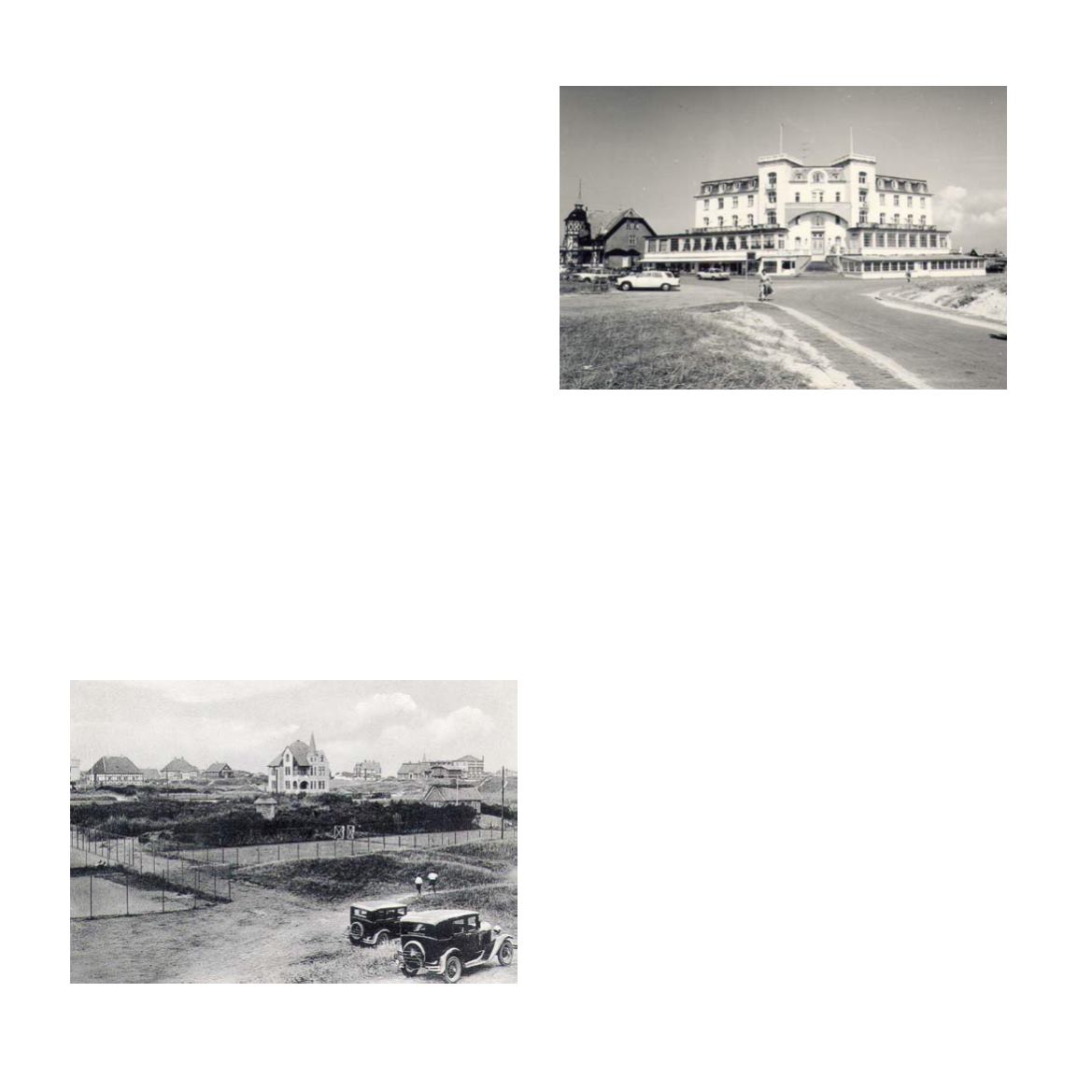

characteristics which have since come to characterise Den-
mark’s coastal tourism: the mixture of both a Danish and an
international public, with both exclusive and more down-to-
earth approaches to the holiday.
Apart from lulls during the two world wars, coastal tour-
ism developed steadily up to the 1950s. The number of holi-
day cottages grew slowly, and the variety of housing stand-
ards grew in step with an increased democratisation of the
concept of holiday. For those less affluent, camping sites,
youth hostels and the cooperative travel bureau Folke-Ferie’s
holiday towns appeared as alternatives to seaside hotels and
holiday cottages. A wide variety of choices was already avail-
able when, in 1938, the Danish parliament passed an actual
holiday act which made two weeks’ holiday a legal right.
The Holidays Act subsequently extended the above pe-
riod to three weeks in 1952, four weeks in 1972 and five
weeks in 1979. The weekend concept was also introduced.
Danes gained more leisure time, and the same trend was seen
in the neighbouring countries as trade and industry began
to pick up again during the 1950s and 60s. Private motor-
ing and infrastructure increased mobility and made it easier
to reach the Danish coasts. Despite increased competition
from charter tourism, Denmark’s coastal tourism exploded.
At the end of the 1940s, the number of holiday cottages in
Denmark was estimated to be less than 10,000. A mere 30
years later, the number had increased to about 175,000. To
this must be added seaside hotels, camping sites, holiday
centres and youth hostels in addition to an increasing num-
ber of attractions and other offers for holiday makers.
The small southwest Jutland coastal towns were one
of the big growth areas, where engagement in tourism be-
came a welcome alternative to the more limited income to
be made from traditional business on the coast. The wildly
growing tourist industry offered, both here and elsewhere,
good business possibilities, but also the risk of finishing up
in Klondyke-like circumstances. The result was an increased
organisation of the tourist business and regulation by law.
Coastal tourism became an important element in a num-
ber of coastal towns’ business economies. At the end of the
2000s, the number of holiday cottages was about 215,000.
The cottages were distributed throughout the country, but
there were marked differences in their uses. In 2011, a third
of all tourist overnight stays in Denmark were in the South-
ern Denmark Region, where Varde and Fanø in particular
helped to increase the tourist-generated growth in value and
employment.
Hotel Kongen af Danmark ved Fanø Bad, 1970’erne. Foto:
Nordby Sognearkiv.
Sommervillaer ved Fanø Bad omkring 1930. Postkort: Nordby
Sognearkiv.
130









